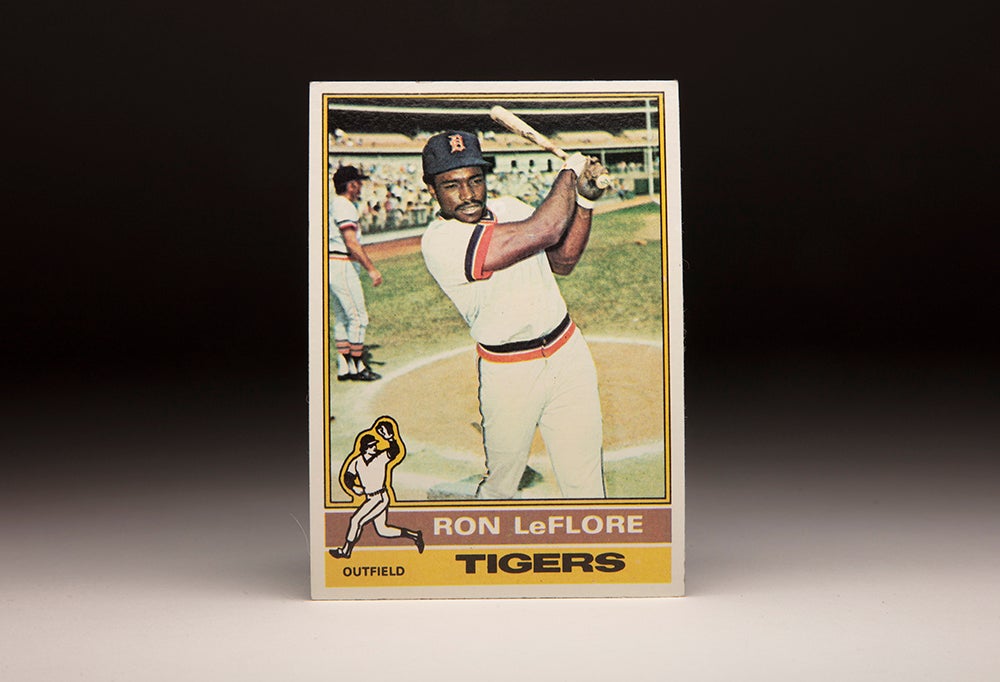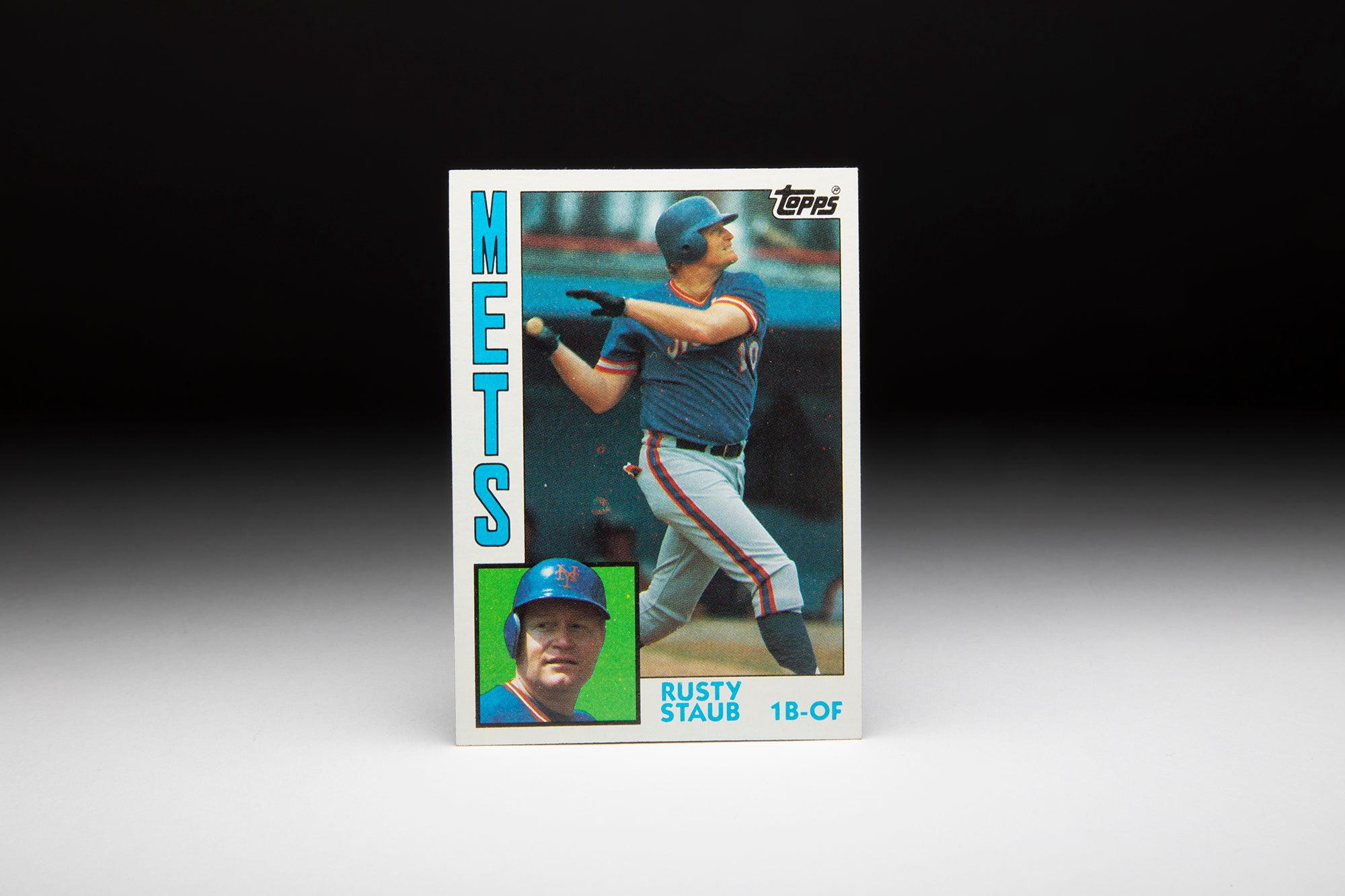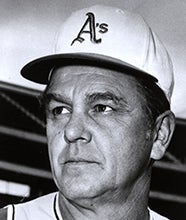- Home
- Our Stories
- #CardCorner: 1984 Fleer Warren Cromartie
#CardCorner: 1984 Fleer Warren Cromartie
He was part of a heralded Expos outfield that was supposed to take Montreal to the top of the baseball world, and many scouts considered Warren Cromartie the best pure hitter of a trio that also included Ellis Valentine and future Hall of Famer Andre Dawson.
The Expos fell short of those expectations, and Cromartie eventually cut short his MLB career for a successful stint in Japan. But with more than 2,000 hits to his credit in both the big leagues and NPB, Cromartie fulfilled his potential as a hitter.
Born Sept. 29, 1953, in Miami Beach, Fla., Cromartie’s father, Leroy, was a college football quarterback who also played with the Cincinnati-Indianapolis Clowns of the Negro American League in 1945 before becoming a recreation director for the City of Miami.
“He taught us the fundamentals off the (batting) tee,” Cromartie told the Montreal Gazette toward the end of his playing career. “He taught us to hit to all fields. Most important, he taught us to practice and practice; to work and work. I’ve never changed that approach.”
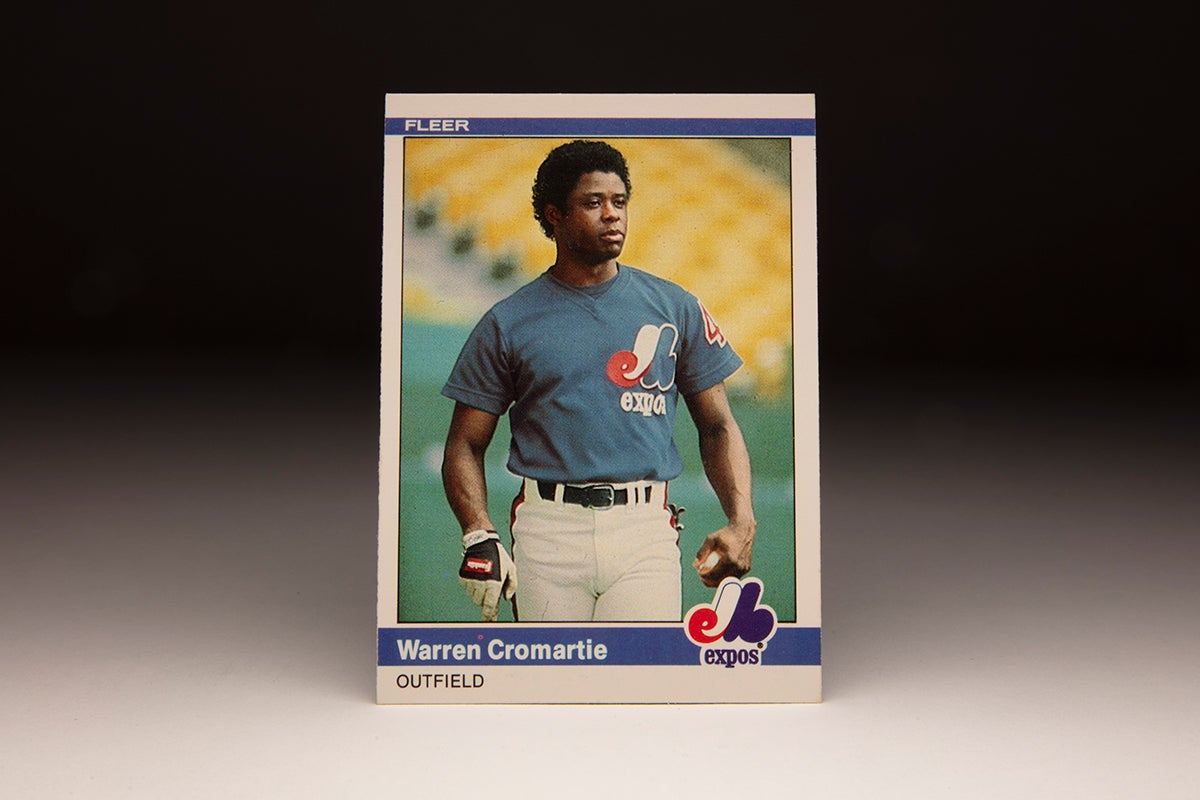
The White Sox selected Cromartie out of Miami Jackson High School in the seventh round of the 1971 MLB Draft, but Cromartie opted to enroll at Miami Dade Junior College, where several MLB players like Mickey Rivers had parlayed a short stay into a pro career. Eligible for the draft again the following January, Cromartie was selected by the Twins in the third round but returned to college. He was selected for a third time in the June 1972 secondary phase draft (for college players) by the Padres as the fifth overall pick but again returned to school.
After spurning a fourth team (the Athletics) after being taken in the first round of the 1973 January draft, Cromartie finally signed with the Expos after being the fifth overall selection in the 1973 June secondary phase draft.
Very quickly, Cromartie established himself as a top prospect. He hit .336 with Double-A Quebec of the Eastern League in 1974, adding 13 homers and stealing 30 bases. The Expos brought him to the big leagues that September, where he had three hits in 17 at-bats.
Cromartie told the media he deserved to be in the majors in 1975 but the Expos sent him to Triple-A Memphis, where he hit .268 in 119 games. Then with Triple-A Denver in 1976, Cromartie hit .337 with 27 steals, earning a promotion to the big leagues in August. He hit just .210 but let it be known that he expected to be a .300 hitter with the Expos very soon.
“I was always fightin’ for a job with the…’Spos,” Cromartie told the Gazette. “Rusty Staub was going to beat me out one year and Pepe Mangual another. There was always somebody.”
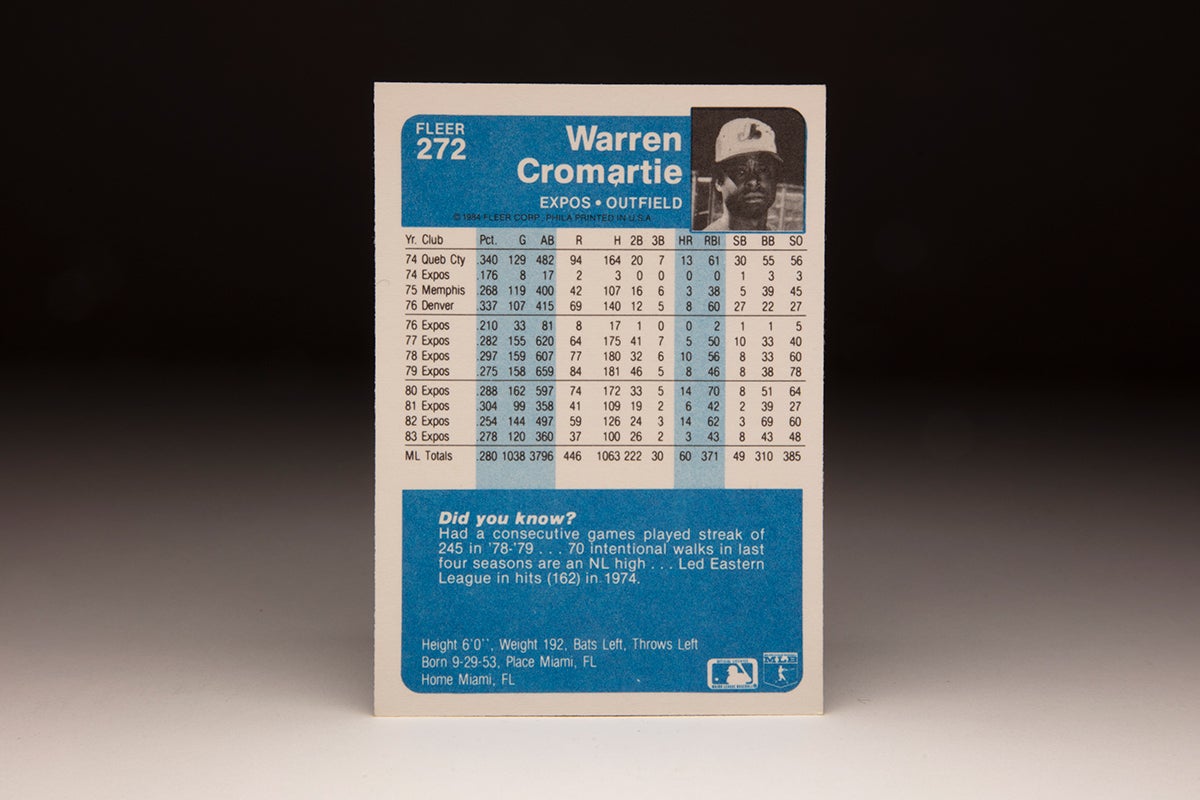
But in 1977, Dick Williams took over the Expos and made Cromartie his Opening Day left fielder. Cromartie had hits in 20 of his first 22 games that year and was batting as high as .319 on July 4 before settling for a .282 average to go along with 41 doubles in 155 games. And yet Cromartie wasn’t even Montreal’s best rookie outfielder that year, as Dawson took home the National League’s Rookie of the Year Award. Valentine, meanwhile, posted what would turn out to be his best MLB season by hitting .293 with 25 homers.
“We are (the best outfield in the majors),” Cromartie told the Atlanta Journal that summer. “No doubt about that, and we’re going to get better. We’re going to improve.”
Defensively, Cromartie rated below average in 1977 but worked hard to improve and wound up leading all NL outfielders with 24 assists in 1978. Cromartie led the team in batting average (.297) and hits (180) that year, and many scouts felt the Expos had the makings of a championship club heading into the 1979 season.
Cromartie had personal as well as team goals.
“I just want to be an All-Star this year,” Cromartie told the Gazette in the spring of 1979. “Yeah, this year Cro’s going to be an All-Star. That’d be great.”
Cromartie never did achieve All-Star status in MLB, but the Expos achieved many of their team goals in 1979 – totaling 95 victories for the first winning season in franchise history. Cromartie hit .275 with 181 hits, 46 doubles and 84 runs scored. Montreal was tied with the Pirates in the loss column with 64 defeats heading into the final day of the season – but the Expos had two fewer wins due to postponements. The Pirates, however, defeated the Cubs 5-3 in their final game while Montreal lost to Philadelphia 2-0 as Steve Carlton pitched a three-hitter – rendering moot the two games that the Expos could have made up to extend their season.

Not content with a second-place finish, Expos general manager John McHale made a blockbuster trade on Dec. 7, 1979, acquiring All-Star outfielder Ron LeFlore from the Tigers in exchange for pitcher Dan Schatzeder. The Expos soon informed Cromartie that he would move to first base, replacing free agent Tony Pérez and making room for LeFlore in left field.
“Not many people remember, but first base is really my position,” Cromartie told the Sault Star of Sault St. Marie, Canada, referring to his days as a first baseman at Miami Dade Junior College. “Maybe it’s because I’m left-handed, but that’s where I started out playing. That’s where my father taught me to play.”
The Expos had acquired Rusty Staub midway through the 1979 season and toyed with the idea of playing him at first base in 1980 before clearing the way for Cromartie by trading Staub to the Rangers on March 31. Cromartie played in each of the Expos' 162 games in 1980, making 158 starts at first base and hitting .288 with 33 doubles, 14 homers and 70 RBI. This time, the Expos battled the Phillies for the NL East title – and lost to Philadelphia on the second-to-last day of the season when Mike Schmidt’s 11th-inning home run gave the Phillies a 6-4 lead and a win that clinched the division crown.
LeFlore led the NL with 97 steals that season but fell out of favor with management and was allowed to leave as a free agent. But the Expos had his replacement in house with a young Tim Raines, who took over left field in 1981 while Cromartie remained at first base. Cromartie signed a three-year contract worth a reported $750,000 following the 1980 season, so it became a question of where – not if – he would play in 1981.
“I’d like to play first base,” Cromartie told the Palm Beach Post. “I love it because you’re always in the game – coming in on bunts, taking cutoffs, holding the runners on and making the double play. I really don’t mind the outfield, either, just as long as I’m in the game.”
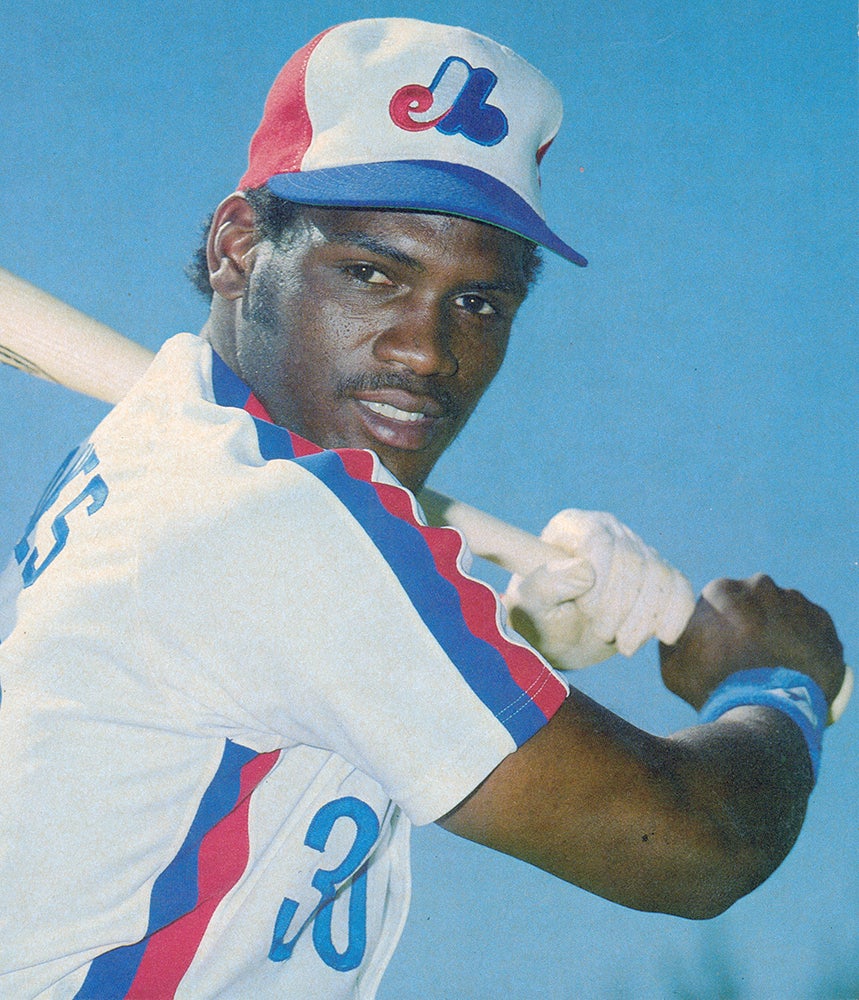
Cromartie was hitting .282 when the strike interrupted the season in June, with the Expos sitting at 30-25 – four games behind the first-place Phillies. When the season resumed in August, the first-half champions were declared postseason-qualified, leaving the Expos to try to win the second-half title to advance to the Division Series.
With the Expos sitting at 44-37 heading into play Sept. 8, McHale dismissed Williams and replaced him with vice president of player development Jim Fanning. The Expos went 16-11 the rest of the way to win the NL East title, advancing to the NLDS vs. the Phillies.
In his first postseason action, Cromartie had two hits and an RBI in Montreal’s 3-1 win in Game 1 then added two more hits as the Expos won Game 2 by the same score. Philadelphia won the next two games to force a decisive Game 5 – and Cromartie caught the game’s final out on a line drive off the bat of Manny Trillo as Montreal won 3-0 to advance to the NLCS.
With a World Series trip on the line against the Dodgers, Cromartie had three hits in five games as Los Angeles rallied from a 2-games-to-1 deficit to win the series. In the deciding fifth game, Jerry White grounded out to end the series with the tying run on second and the winning run on first – and Cromartie standing in the on-deck circle.
In 1982, rumors swirled throughout Spring Training that the Expos were looking for more power at first base. Cromartie dismissed them.
“As far as I’m concerned, I’ll be the first baseman on Opening Day,” Cromartie told the Gazette on March 26. “All this talk is kind of annoying, but whatever it takes…I love to play.”
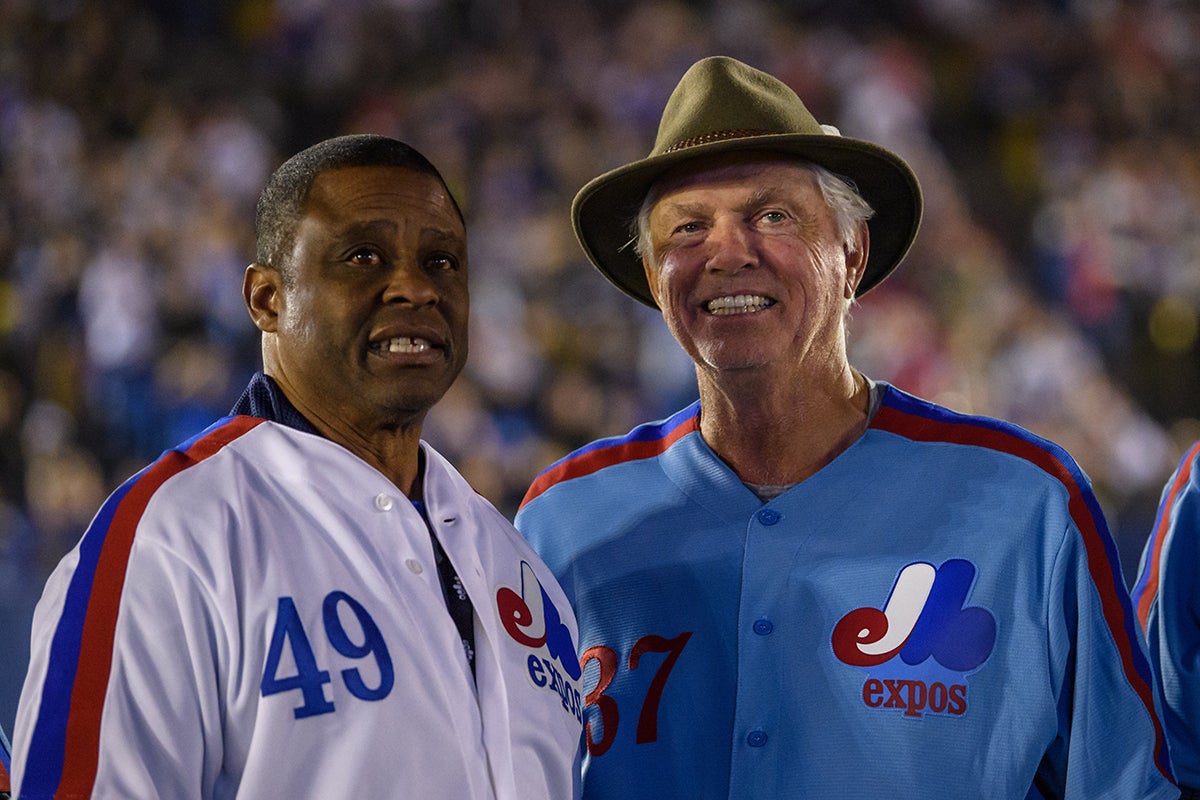
But the rumors proved true when the Expos traded Larry Parrish and Dave Hostetler to the Rangers for Al Oliver on March 31. Suddenly, Cromartie was an outfielder again – this time in right field.
Cromartie played 101 games in right field in 1983, totaling 12 assists but also committing six errors. Jim Wohlford and Terry Francona also saw time in right field for the Expos, and Cromartie finished the season batting .278 with 26 doubles, three homers and 43 RBI in 120 games.
With his contract expired, Cromartie became a free agent but found limited interest. After contract negotiations with the San Francisco Giants broke off with a deal seemingly in sight, Cromartie and his agent Cookie Lazarus began exploring other options.
On Dec. 27, 1983, Cromartie signed a three-year deal worth a reported $2.5 million with the Yomiuri Giants of the Japan Central League. Many outlets framed the signing as the 30-year-old Cromartie becoming the first big league player to opt to play in Japan during his prime.
“This is going to make some heads shake. But I feel this is best for me,” Cromartie told Knight-Ridder Newspapers. “This is my prime. All I ask is that they keep me happy and play me.”

Cromartie was an immediate hit in Japan, batting
.280 with 35 homers and 93 RBI in 1984. He continued to perform at an all-star level the next three years, setting a career high with 112 RBI in 1985, hitting .363 with 37 homers in 1986 and belting 28 home runs in 1987.
Cromartie played in just 49 games in 1988 due to a broken thumb but rebounded in 1989 by hitting .378 en route to Central League Most Valuable Player honors while leading the Giants to the Japan Series title.
“I’m eating the same amount of sushi I always have,” Cromartie quipped to the Miami Herald about his fast start to the 1989 season, when he flirted with a .400 batting average.
He considered returning to the United States following the 1989 campaign but opted for one more season in Japan.
“Going to Japan was the best thing that happened to me,” Cromartie told the Gazette following the 1989 season. “It was the best thing for me because it gave me an opportunity to branch out, to grow a little within myself.
“I’m going to go back for one more year now because I’m on top of my game. And then it will be on with the rest of my life.”
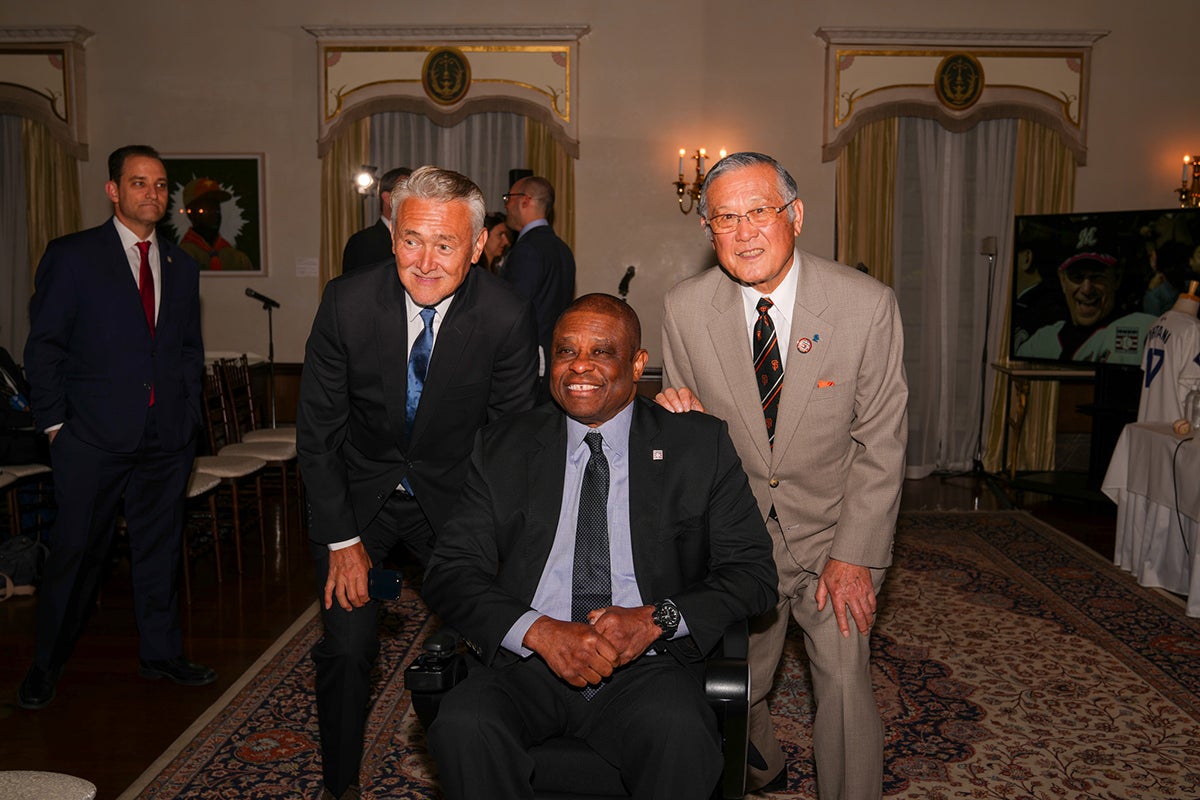
By that time, Cromartie had built a state-of-the-art recording studio in Miami to pursue his love of music. An accomplished drummer, Cromartie would often practice with the legendary Canadian rock band Rush.
Cromartie hit .293 with 14 homers and 55 RBI with Yomiuri in 1990, then returned to the United States in 1991, signing a one-year deal with the Kansas City Royals on April 5, 1991, after calling the Royals and asking for a tryout.
“He can come off the bench and hit the good fastballs,” Royals assistant general manager Joe Klein told The Boston Globe after Cromartie signed.
Cromartie hit .313 with a .381 on-base percentage off the bench in 1991. On Sept. 15 – three weeks before the end of the season – Cromartie announced his retirement.
“I have some family business at home,” Cromartie told the AP. “It was time to go.”
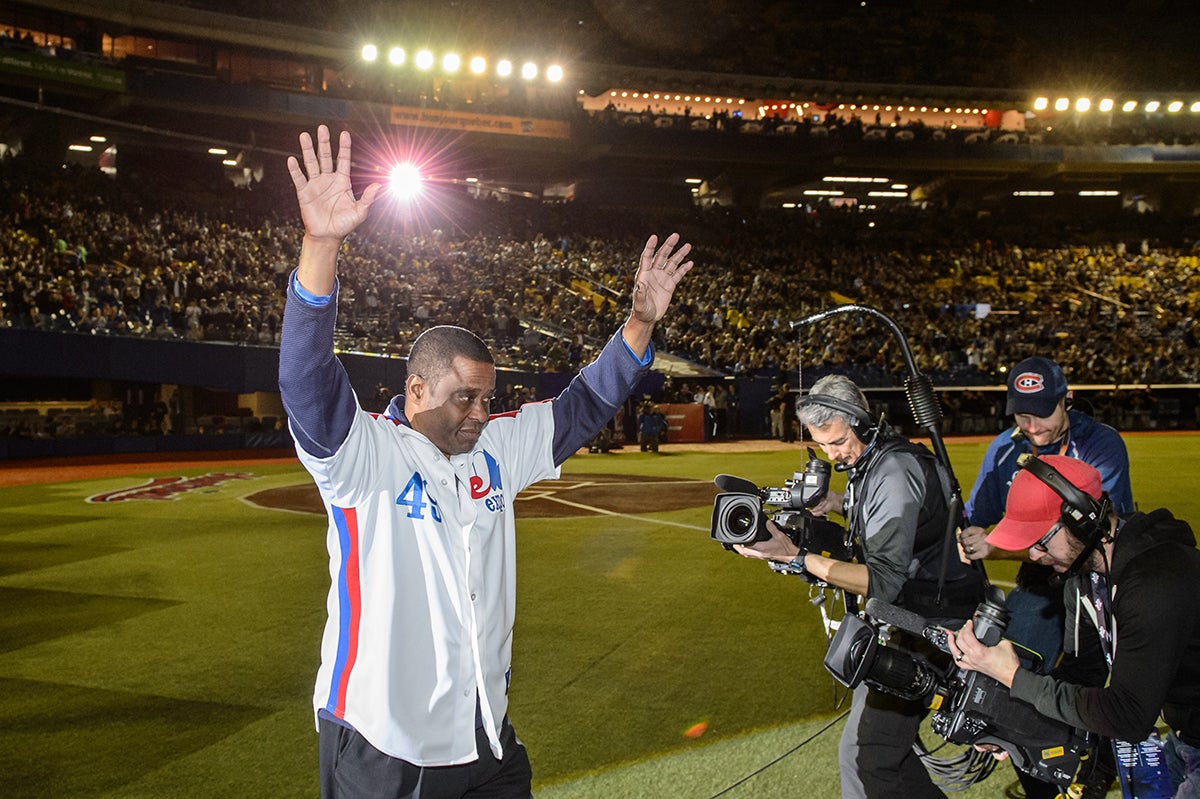
Cromartie spent much of his post-playing career as a broadcaster while venturing into several other business ventures. In 10 big league seasons, Cromartie hit .281 with 1,104 hits, 229 doubles and 61 homers. In seven seasons with the Yomiuri Giants, Cromartie batted .321 with 951 hits, 170 doubles and 171 homers.
And at every stop, the affable Cromartie brought smiles to the faces of teammates and fans alike.
“Of course, you know me, man: I can fit in with anybody,” Cromartie told the Gazette as his career was winding down. “I can find the best side of anything or anybody.”
Craig Muder is the director of communications for the National Baseball Hall of Fame and Museum


